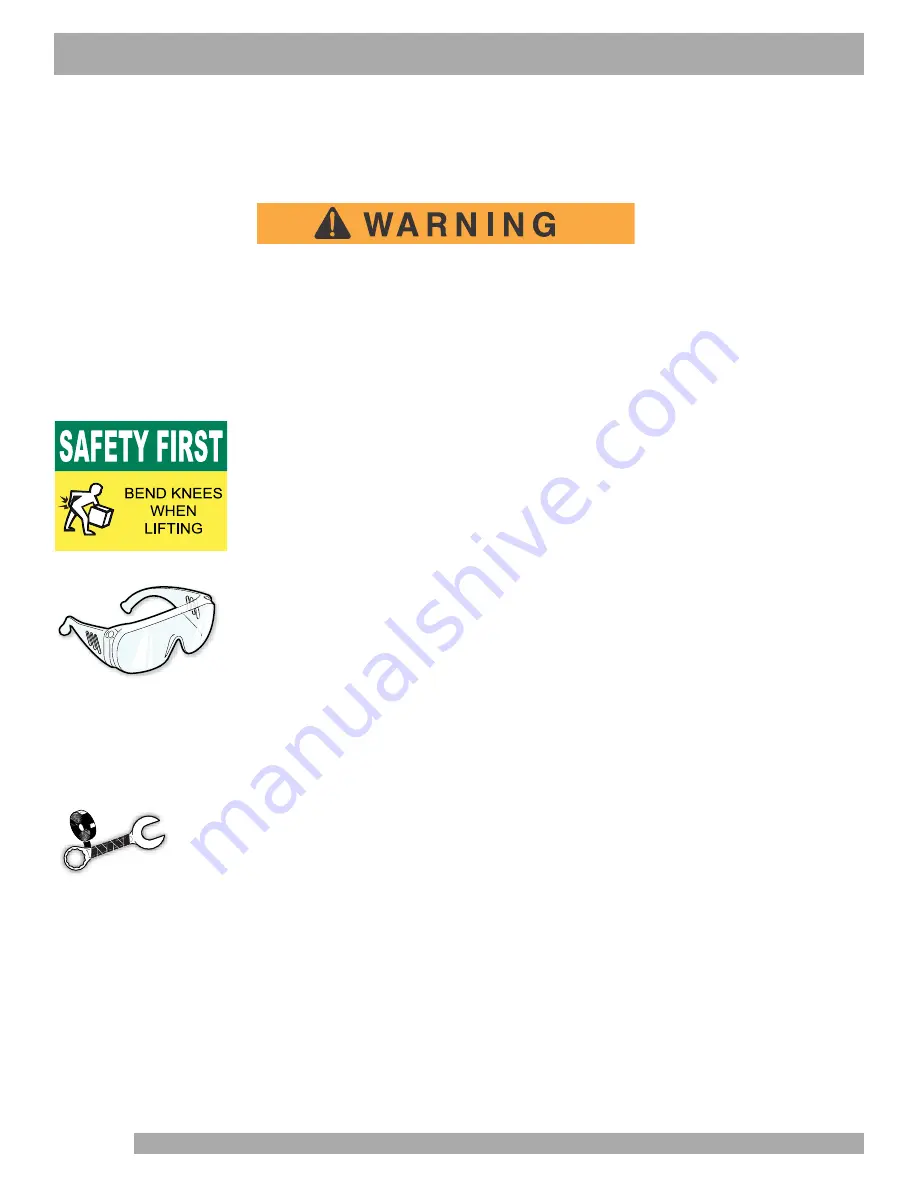
MAINTENANCE
Read all of this manual to become thoroughly familiar with this vehicle. Pay particular attention to all Notices, Cautions, Warnings, and Dangers.
36
BATTERY CHARGING AND MAINTENANCE
Safety
Always observe the following warnings when working on or near batteries.
To prevent battery explosion that could result in severe personal injury or death, keep all smok-
ing materials, open flames or sparks away from the batteries.
Hydrogen gas is formed when charging batteries. Do not charge batteries without adequate ven-
tilation. A 4% concentration of hydrogen gas is explosive.
Be sure that the key switch is off and all electrical accessories are turned off before starting work
on the vehicle.
Never disconnect a circuit under load at a battery terminal.
Batteries are heavy. Use proper lifting techniques when moving them.
Always lift the battery with a commercially available battery lifting device.
Use care not to tip batteries when removing or installing them; spilled
electrolyte can cause burns and damage.
The electrolyte in a storage battery is an acid solution which can cause
severe burns to the skin and eyes. Treat all electrolyte spills to the body
and eyes with extended flushing with clear water. Contact a physician
immediately.
Always wear a safety shield or approved safety goggles when adding
water or charging batteries.
Any electrolyte spills should be neutralized with a solution of 1/4 cup (60
ml) sodium bicarbonate (baking soda) dissolved in 1 1/2 gallons (6 liters)
of water and flushed with water.
Overfilling batteries may result in electrolyte being spilled from the battery during the charge
cycle. Expelled electrolyte may cause damage to the vehicle and storage facility.
Aerosol containers of battery terminal protectant must be used with extreme care. Insulate
metal container to prevent can from contacting battery terminals which could result in an
explosion.
Wrap wrenches with vinyl tape to prevent the possibility of a dropped wrench
from shorting out a battery, which could result in an explosion and severe per-
sonal injury or death.
Never charge a vehicle in a hazardous location or atmosphere. Reference NFPA
505 for definitions of hazardous and non-hazardous locations.
Battery Disposal
Lead-acid batteries are recyclable. Return whole scrap batteries to distributor, manufacturer or lead smelter for recy-
cling. For neutralized spills, place residue in acid-resistant containers with absorbent material, sand or earth and dis-
pose of in accordance with local, state and federal regulations for acid and lead compounds. Contact local and/or
state environmental officials regarding disposal information.
Battery
A battery is defined as two dissimilar metals immersed in an acid. If the acid is absent or if the metals are not dissim-
ilar, a battery has not been created. The batteries most commonly used in these vehicles are lead acid.
Summary of Contents for E-Z-GO Cushman TITAN 36V HD
Page 1: ...Owner s Guide Titan LD HD Electric 635592 B Issued NOVEMBER 2013 Revised JULY 2018...
Page 57: ......
Page 58: ......
















































